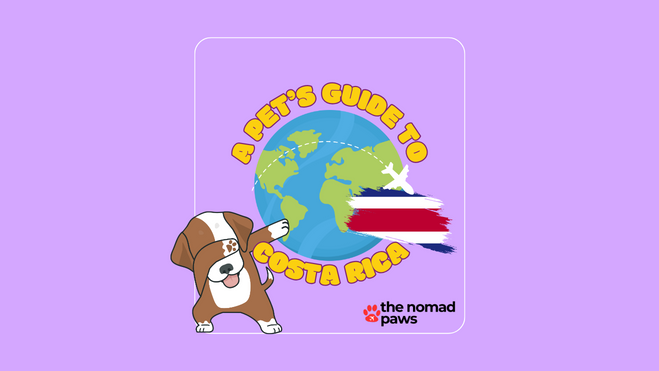Are you relocating to Costa Rica with your dog or planning to bring them along on your trip? It’s definitely doable. But you need to take a few key steps to ensure a smooth journey for both you and your dog.
First things first, let’s talk about what you need to do before you even pack your bags.
Your dog will need to have a current rabies vaccination, and you’ll need to get a health certificate from a vet who’s accredited by the USDA.
It’s also a good idea to get your dog microchipped and treated for any parasites before you go.
Rabies Vaccination and Certificate
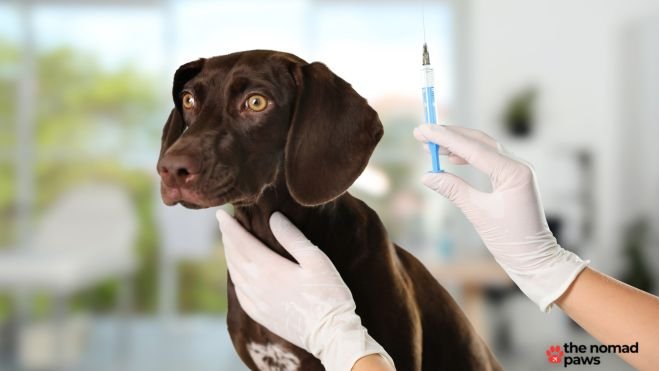
Make sure your dog gets their rabies shot at least a month before you leave. You’ll need to get a rabies certificate and a health certificate from a USDA-accredited vet. This is super important because it proves that your dog is healthy and ready to travel.
In addition to the rabies vaccine, your dog will need some other shots too.
These include vaccines for distemper, hepatitis, leptospirosis, and parvovirus. Your vet might also recommend the DHLP vaccine, which covers a bunch of these diseases all at once.
Health Certificate from USDA-Accredited Veterinarian
Within two weeks of your trip, you’ll need to take your dog to a USDA-accredited vet for a checkup.
The vet will give you a health certificate. It has all the key info about your dog’s health, like their rabies shot and parasite treatment.
Make sure you get the certificate endorsed by the USDA so you’re good to go.
This endorsement proves that your dog meets all the entry requirements. For example, they need a current rabies shot and to be treated for parasites. The USDA charges a $38 fee to approve the certificate for international travel.
Parasite Treatments
Costa Rica has many internal and external parasites. They can harm your dog, so it’s important to treat them before you go.
To meet Costa Rica’s entry requirements, your dog will need to be treated for internal parasites like worms. This is mandatory, so make sure you follow all the necessary steps to avoid any issues at customs.
You must treat your dog for internal parasites. You’ll also need to deal with external parasites, like ticks and tapeworms.
The treatment has to be given before you travel. It has to be within a specific timeframe. So, don’t wait until the last minute. Costa Rica has these rules in place to prevent the spread of diseases, so it’s important to follow them closely.
Microchipping (Recommended)
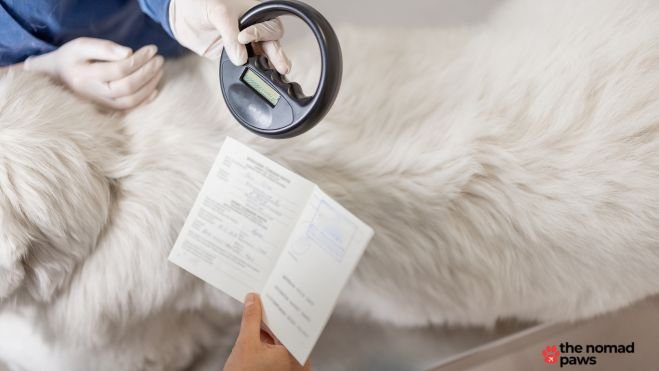
It’s not a strict requirement. But, I highly recommend microchipping your dog before you bring them to Costa Rica.
It’s a permanent form of identification that can be a lifesaver if your dog gets lost in a new place. While authorities in Costa Rica won’t ask you for proof of microchipping, I find it’s always better to be safe than sorry.
If you’re planning a trip to Costa Rica with your dog, consider getting them microchipped well in advance.
It’ll give you peace of mind knowing that your furry friend has a secure form of ID, and it’ll make your travels a whole lot smoother and safer for both of you.
Banned Breeds (None Currently)
Good news for dog owners! They plan to bring their furry friends to Costa Rica from the US. Currently, there are no banned breeds. So, all dogs are welcome, no matter their breed!
Costa Rica doesn’t discriminate based on dog breeds, making it a welcoming destination for all dog owners.
You just need the right documents. Then, you and your dog can explore Costa Rica’s beaches, forests, and mountains.
Choosing an Airline and Booking Your Dog’s Travel
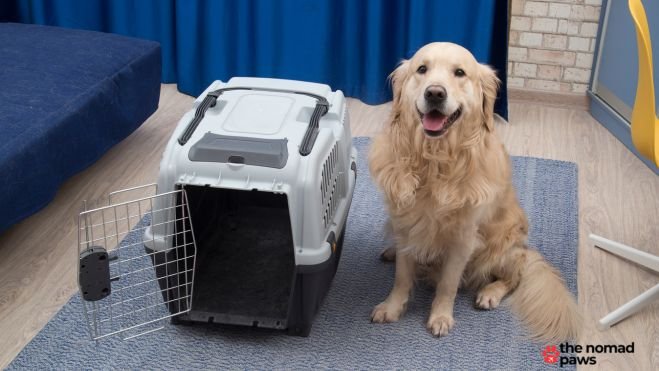
Choosing the right airline is extremely important to guarantee a safe and comfortable trip to Costa Rica for your pup.
Although your dog won’t be offered drinks or snacks, you’ll want to make sure your dog is safe, comfortable, and happy throughout the journey.
In-Cabin vs. Cargo
First things first, let’s talk about whether your dog will be flying in the cabin with you or in the cargo hold.
If you have a small dog that can fit comfortably in a carrier under the seat, in-cabin travel is usually the way to go. It’s less stressful for your pup, and you can keep an eye on them during the flight.
But if your dog is too big for the cabin, don’t worry! Many airlines offer safe and comfortable cargo options for larger breeds. Just make sure to research how to keep your dog calm during a flight and choose an airline with a good track record of handling pets in cargo.
Airline Pet Policies
Now, let’s dive into the nitty-gritty of airline pet policies. Every airline has its own set of rules and requirements when it comes to traveling with dogs. Some have size and breed restrictions, while others may charge extra fees for bringing your pet along.
It’s important to read up on these policies before you book your flight.
You don’t want any surprises at the airport! And trust me, booking your dog’s travel well in advance is key. Airlines have limited space for pets, so the earlier you reserve a spot, the better.
Crate Requirements
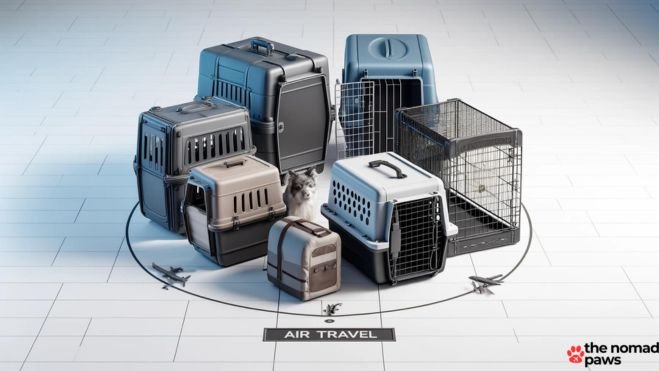
Okay, let’s talk crates. Your dog’s crate is their home away from home during the flight, so it’s important to choose the right one.
Each airline has specific requirements for crate sizes, materials, and ventilation. Make sure your crate meets these standards, or you might run into trouble at check-in.
Making a Reservation
Alright, you’ve chosen your airline, you know their pet policies, and you’ve got the perfect crate. Now it’s time to make that reservation!
Start by selecting a pet-friendly airline and booking your dog’s travel well in advance.
When you’re making your reservation, be sure to inform the airline that you’ll be traveling with a pet. They’ll need to know your dog’s breed, size, and any special requirements
It’s also a good idea to choose a direct flight if possible, to minimize travel stress for your pup.
Costs to Expect
Let’s talk money. Traveling with a dog isn’t cheap, but it’s worth it to have your best friend by your side.
You’ll also need to budget for a travel crate that meets airline requirements, as well as any necessary health certificates or vaccinations. And don’t forget about pet-friendly accommodations at your destination!
While bringing your dog to Costa Rica does involve some extra planning and costs, it’s all worth it in the end. With careful preparation and a little bit of know-how, you and your furry friend can have the adventure of a lifetime in this beautiful country.
Once you’ve landed in Costa Rica with your dog, you’ll need to navigate the arrival process. You can bring your dog through the international airports in San José and Liberia. There, you’ll clear customs and show your pet’s papers.
Arriving in Costa Rica with Your Dog
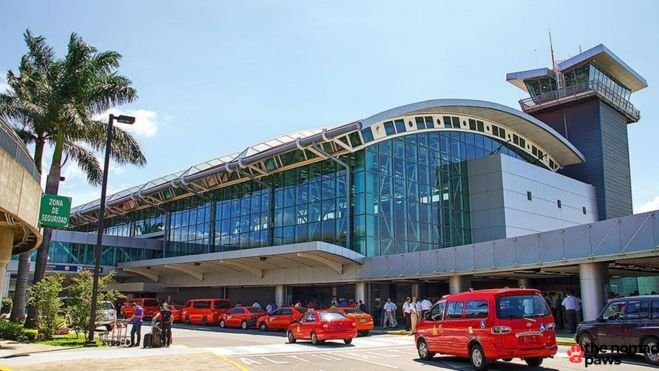
You can bring your dog through the international airports in San José and Liberia, where you’ll clear customs and present your pet’s documentation
You’ll need to have all your paperwork in order, like your dog’s health certificates and any necessary permits. Trust me, having everything ready to go will make your arrival a breeze. And who doesn’t want a stress-free start to their vacation?
Customs Clearance Process
Once you land in Costa Rica, you’ll need to go through customs with your dog. This is where having all your paperwork comes in handy!
You’ll need to show the customs officials: your dog’s health certificate, rabies records, and any other important documents.
They’ll give your pup a quick once-over to make sure they’re healthy and meet all the entry requirements. As long as you’ve got everything in order, you shouldn’t have any problems.
Just remember, if you lack the right paperwork or if your dog doesn’t meet the entry rules, you might face delays or even be refused entry. So, it’s super important to make sure you’ve dotted all your i’s and crossed all your t’s before you leave home!
Import Permit (If Needed)
If your dog is traveling alone or if you’re bringing them to Costa Rica for business reasons, you’ll need to get an import permit.
To get the permit, you’ll need a health certificate from your vet back home. It must say your dog is healthy and has had their rabies vaccine. The certificate should also mention that your dog has been treated for parasites within the last 15 days.
Keep in mind, you only need the import permit if your dog is worth more than $100 or if you’re bringing more than two pets. If you’re just bringing one or two dogs along as your personal pets, you’re good to go without the permit.
When in doubt, it never hurts to double-check with the Costa Rican embassy or consulate before you leave, just to be sure you’ve got everything you need.
Quarantine (Not Required)
Unlike a lot of other countries, Costa Rica doesn’t require your dog to be quarantined when you arrive. That means less stress for you and your furry friend!
You will need to get a pet quarantine permit from the Ministry of Agriculture and Animal Control before you arrive, though. It costs $22 per pet and you can apply for it through a customs agency, in person, or through a third party.
Just make sure you give yourself enough time to get the permit, since it usually takes about 72 hours to process. You’ll be ready to start your Costa Rican adventure as soon as you land. You just need all your paperwork and for your dog to meet the entry requirements.
What to Expect Once in Costa Rica

Once you’ve got your dog to Costa Rica, you’ll want to keep them well during your stay. Bring with you all the travel essentials for dog-friendly holidays and follow these additional tips to make that happen.
Finding a Local Vet
To find a local vet, start by asking for recommendations. Ask other pet owners or locals who know the area well.
Keep in mind that vet services vary in quality. So, it’s crucial to do your research and find someone you feel comfortable with.
Don’t be afraid to ask questions and make sure the vet understands your dog’s medical history and needs. There might be language barriers or differences in how things are done. They’ll be different from what you’re used to back home. But, with a little effort, you’ll find the perfect vet for your pup.
Keeping Your Dog Safe from Hazards
Costa Rica is a beautiful place, but it does have some potential hazards for dogs that you’ll want to watch out for.
Stray dogs are pretty common, and they can sometimes get into fights or spread diseases. Plus, the stress of traveling and the change in climate can make your dog more likely to get sick.
Parasites like ticks are also a big problem in Costa Rica, so make sure your dog is on a good preventive medication. When you’re out exploring, keep your pup on a leash to avoid any run-ins with strays or wild animals. And be extra careful near roads, since car accidents involving dogs happen more often than you might think.
Weather and Breed Considerations
The high temperatures and humidity can be tough on some breeds, especially those with thick coats or short snouts.
Huskies and Chow Chows might have a hard time staying cool. Pugs and Bulldogs can struggle to breathe in the humid air. Consider your dog’s activity level and exercise needs, and make sure they have plenty of shade and water when you’re out and about.
If your pup has breathing issues, watch their breathing closely. Try to avoid being outside during the hottest parts of the day.


